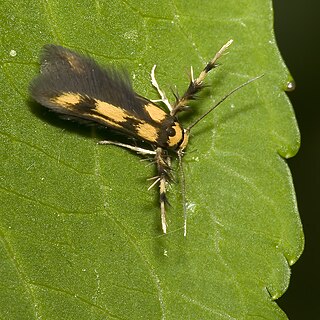
Stathmopoda pedella is a species of moth of the family Stathmopodidae. It is found in Europe.
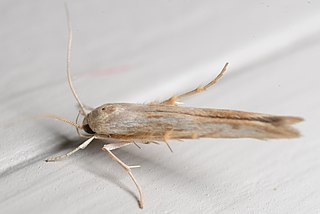
Stathmopoda aposema is a species of moth of the family Stathmopodidae. The common name is Kowhai Seed Moth. It is found in New Zealand.

Stathmopoda melanochra is a species of moth of the family Stathmopodidae. It is found in Australia and New Zealand.

Stathmopoda is a genus of moths. It has variously been placed in its own family, Stathmopodidae, or in subfamily Stathmopodinae in the family Oecophoridae. Note that the phylogeny and systematics of gelechoid moths are still not fully resolved.
Stathmopoda biclavis is a species of moth in the Stathmopodidae family. It is found in the Seychelles on Aldabra island in the Indian Ocean.
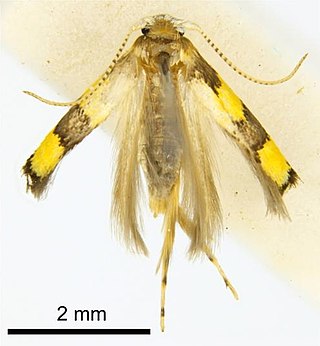
Stathmopoda trichrysa is a species of moth in the Stathmopodidae family. It is found on Fiji.

Stathmopoda aconias is a species of moth of the family Stathmopodidae. It is found in India and Sri Lanka.
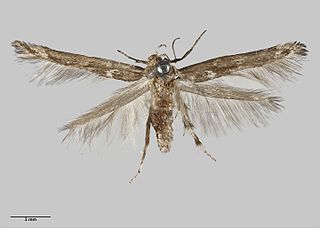
Stathmopoda albimaculata is a species of moth in the Stathmopodidae family. It is endemic to New Zealand and is located in the lower half of the South Island. This species favours habitat that includes the various Olearia species that host its larvae. It has also been found to inhabit lowland podocarp native forest. The larvae feed on species in the genus Olearia. Adults are on the wing between the months of October and February. S. albimaculata is classified as Nationally Endangered by the Department of Conservation.

Stathmopoda holochra is a moth of the family Stathmopodidae. It was described by Edward Meyrick in 1889 using specimens first collected at the Wellington Botanic Garden. It is endemic to New Zealand. The larvae of this species feed on Phormium seed heads.

Stathmopoda skelloni, the yellow featherfoot, is a species of moth in the Stathmopodidae family. It is endemic to New Zealand and can be found throughout the country. This species inhabits native forest, coastal dunes and shrubland as well as cultivated gardens and orchards. The larvae of this species feed on a variety of plant species including agricultural crops such as kiwifruit and persimmons. The adult moths are on the wing from September until March and are nocturnal but are attracted to light.

Stathmopoda mysteriastis is a moth of the family Stathmopodidae. It was described by Edward Meyrick in 1901. It is found in New Zealand.

Stathmopodidae is a family of moths in the moth superfamily Gelechioidea described by Edward Meyrick in 1913.
Stathmopoda diplaspis is a moth of the Stathmopodidae family. It is found in United Kingdom, Saudi Arabia, Iran, Afghanistan, Pakistan, India, Sri Lanka, Tajikistan, Afghanistan and Thailand.
Stathmopoda masinissa, the persimmon fruit moth, is a moth of the family Stathmopodidae. The species was first described by Edward Meyrick in 1906. It is a serious pest on several persimmon species. It is found in several Old World countries Japan, Korea, Australia, Sri Lanka, Thailand and China.

Stathmopoda distincta is a moth of the family Stathmopodidae. It was described by Alfred Philpott in 1923. It is endemic to New Zealand.
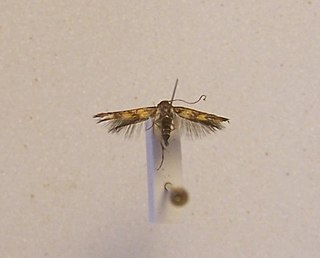
Stathmopoda distincta is a moth of the family Stathmopodidae. It was described by Edward Meyrick in 1926. It is endemic to New Zealand.
Stathmopoda cephalaea is a moth of the family Stathmopodidae. It was described by Edward Meyrick in 1897. It is found in Australia and has been recorded in New Zealand.













